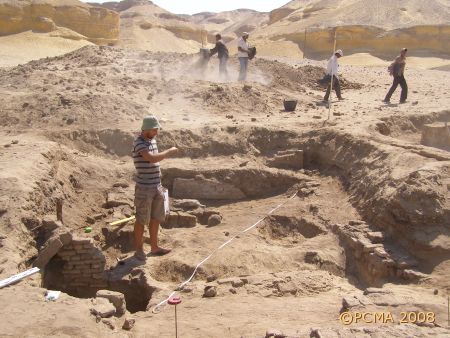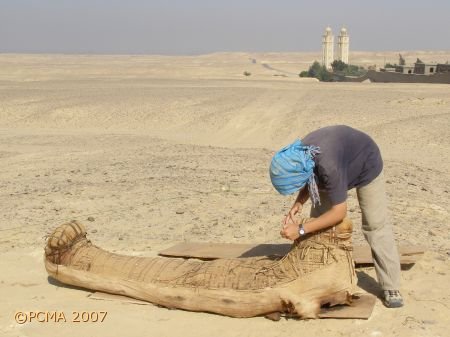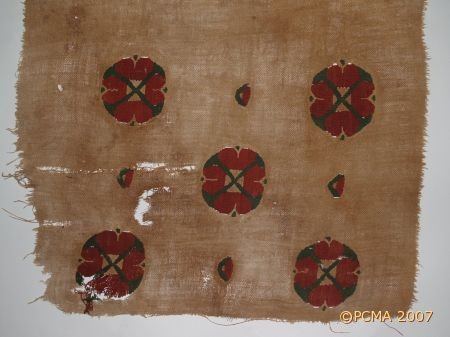

The extensive monastic site in the southeastern part of the Fayoum Oasis is situated at the foothills of Naqlun and within the valleys between the hills.
The monastery has been operational in various organizational forms from the mid-5th century to the present day. It consists of 90 hermitages carved into the rocks, as well as late antique, medieval, and modern buildings.
Two Christian cemeteries are located at the site: one from the late antique period (5th–7th century, Cemetery C), and another from the medieval period, dating from the late 11th century to the transition between the 12th and 13th centuries (Cemetery A).
Numerous texts, around 1,000 in total, written on papyrus, parchment, and paper in Greek, Coptic, and Arabic have been uncovered in the hermitages and medieval ruins, including one Latin text (by Livy), along with various objects related to the daily lives of monks and their companions.


The cemeteries have yielded numerous textiles, including decorative, linen, wool, and silk fabrics produced both in Egypt and abroad, such as in Andalusia, with some inscribed (Tiraz), as well as well-preserved glass vessels made using various techniques. The site also features a significant amount of pottery, mostly locally produced, but also imported from North Africa, Palestine, and the Greek islands.
All photos come from the site https://pcma.uw.edu.pl
